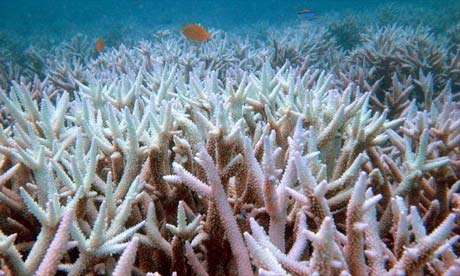The hedgehog, water vole and hazel dormouse are among a number of British mammals that face becoming seriously endangered, research published today reveals.
Climate change and habitat loss have led to a dramatic increase in the number of mammals whose future survival is a cause for concern among conservationists, the study commissioned by the People's Trust for Endangered Species concludes. The Bechstein's bat, one of the country's rarest mammals, has shown a marked decline while the number of soprano pipistrelle bats has fallen by 46% in six years.
The report, the seventh annual assessment of the state of land mammals in Britain, says that more effort is needed to help the endangered species, which now number 18 - more than 30% of Britain's mammal species - up from 10 last year. Only two species on the UK Biodiversity Action Plan list, the otter and the lesser horseshoe bat, have increased their numbers.
Professor David Macdonald, conservation biologist in the wildlife conservation unit at Oxford University and co-author of the report, said: "Next year, the focus of biodiversity conservation in England will shift from individual species to a more integrated eco-system approach, incorporating climate change adaptation principles and establishing complementary species and habitat conservation."
Unpredictable and extreme weather conditions, combined with hotter, drier summers and wetter winters, were causing changes in the distribution and behaviour of some species, such as the hazel dormouse, the study finds.
Although modern agricultural practices and the disappearance of hedgerows have had a significant impact on mammals such as the hedgehog, "conflict" between mammal species, particularly involving the invasive American mink, is also posing problems for conservationists, it adds. Mink-free zones on a large scale need to be established to stop the "catastrophic decline" of water voles that has been seen over the last 20 years.
Pine martens, one of the species on the list of conservation concern and extremely rare in England and Wales, are preying on capercaillie in Scotland, one of the fastest-declining gamebirds.
Wild deer, whose distribution has been increasing over the last 30 years, are the major cause of damage to Woodland Sites of Special Scientific Interest and are also destroying vegetation cover for smaller mammals. The damage caused is likely to worsen unless more work is done to fence in deer and manage their populations, the report concludes.
"The interaction between people and nature has positive and negative parts. If people are looking for a single, simple answer then they're going to be frustrated," Macdonald said.
"Conservation is as much about control and management as it is about preservation. Sometimes you've too many and in other places too few, which involves fostering where necessary and controlling elsewhere."
The report also tackles the controversial issue of reintroducing species into the wild where they have become extinct, including the beaver, which will be put back into Scotland next spring for the first time in 400 years. The report said the introduction would bring more benefits than costs to biodiversity. Other species being considered for release are up to 450 Eurasian lynx, which would give Scotland the fourth largest lynx population in Europe. Nida al-Fulaij, development manager for the People's Trust for Endangered Species, said mammals had often been neglected in people's imagination.
"We've been funding more and more mammal conservation work in the UK and are concerned about the number of mammals on the conservation priority list. There's no overall organisation for mammals, in the way that there is the RSPB for birds, and mammal conservation has been very fragmented. Mammals are not as easy to see as birds - many are nocturnal," al-Fulaij said.
"Lots are considered vermin and it's not until numbers drop, as with the hedgehog, that people notice. Sometimes there's a misconception that they're very numerous when in fact numbers are falling. Urban areas, hedgerows and gardens are great habitats and we would encourage people to go out and enjoy them."





